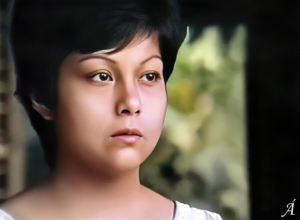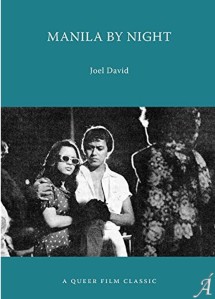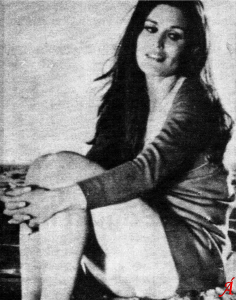Since I’d been writing before I could get rid of short pants, I figured I’d compile on this blog as much of my output as I can find. Most of it will be film-related, and the ones that will actually be posted here won’t be able to make a better name for me than my still-available publications already did – hence this blog’s name. Also, much of the content here will necessarily be textual. Where the material is available elsewhere online, I’ll be linking to the original source in the hope it’s still there. I’m hoping to be able to upload earlier writing, especially the ones that won’t be of interest to anthologizers. Herewith are the larger publication categories that link to appropriate sections (with articles in the linked sections listed in reverse chronological order):
Books. The introductions of texts I’d either written or edited should show up, as well as tables of contents with links to articles. Here and in the case of anthologies not edited by me, the guideline I follow is: material still for sale will not be appearing here for as long as online commercial servers are still running and/or dead-tree copies are still available at “regular” (as opposed to rare-title) prices. There will be exceptions (when will there never be any?), as for example when an editor not just reneged on the promise of payment and complimentary copies – not that I look forward to those perks but this one even over-dramatically provided a contract and IOU – but also aggravated his charlatanry by making the volume next-to-unaffordable and nearly impossible to track down; in still another case, the only request I made to an editor (a dedication to a dying mentor) was appallingly ignored, so the article shows up on this site with that crucial first line where it should be.
Journals. I’ve always endeavored to publish locally whenever possible, but this has become easier the closer we get to a future that we all better hope should arrive sooner, if not later. Aside from participating in a roundtable at GLQ: A Journal of Lesbian and Gay Studies, my non-Pinas journal contributions include the Asian Journal of Women’s Studies from Korea, the Southeast Asian Studies from Japan, and the International Journal of Asian Studies from the UK. The Philippine titles have been confined to the Diliman-area university publications, specifically Ateneo de Manila University’s Kritika Kultura, University of Santo Tomas’s UNITAS: Semi-Annual Peer-Reviewed International Online Journal of Advanced Research in Literature, Culture, and Society, and the University of the Philippines’ Plaridel: A Philippine Journal of Communication, Media, and Society (and its predecessor, the Philippines Communication Journal), Asian Studies: Journal of Critical Perspectives on Asia, Humanities Diliman: A Philippine Journal of Humanities, and Diliman Review. Two other journals I had written for, the Cultural Center of the Philippines’ defunct Kultura and the independently published Manila Review (not the 1970s periodical with the same title) were similarly associated with people from the two universities. I was also part of the staff of another defunct publication, The Review).
Magazines & Supplements. I had reported for Asiaweek, been quoted in a few New York film mags (something I’d never been able to confirm), and had a book reviewed in Cinemaya; I was also a respondent to one of the Sight and Sound decadal surveys (listed in this blog as a journal). Otherwise I remained a Pinoy pre-internet mag presence, mainly as resident critic of National Midweek (following a staff-writing stints in New Day). Who was my long-term freelance outlet, and I had occasional contributions to Mediawatch and Conjuncture, and an even longer list of corporate periodicals, among which the only relevant one to the current blog would be the publications of the Marcos era’s Experimental Cinema of the Philippines.
Newspapers. As a resident professional in Korea, I’d managed to publish in some of the country’s English-language outlets, specifically Korea Times and, as one-time columnist, Korea JoongAng Daily. Some of my pieces occasionally still land on the pages of Philippine Star and the Philippine Daily Inquirer, but I was once recognizable (again, pre-internet era) in Manila Standard, the Philippines Daily Express, Bulletin Today, and what used to be known as the Times Journal group (including weekend magazine supplements). One editor, Daisy Catherine L. Mandap, facilitated my moving around the Port Area offices – first Daily Express, then Times Journal, then New Day (via Business Day, now BusinessWorld), after which she shipped her considerable skills as journo and newly minted lawyer to the more welcoming then-Crown Colony of Hong Kong. I’d be remiss in failing to mention the occasional newspaper-format student outlet, most recently the Hallym Post but also in the University of the Philippines’ Tinig ng Plaridel and more extensively the Philippine Collegian, where I’d once been a staff member, and wherein some of my output connects with everything else that came beforehand in the sense that they’d fall under the category of juvenilia.
Online Media. I (or my name) had appeared in ABS-CBNnews.com, Philippine Entertainment Portal, and Rappler, but the outlet that solicits my writing on a more or less consistent basis is TheFilAm.net, which connects with a lot of my history: it’s New York-based, it’s magazine-journalistic, and it’s handled by Cristina del Carmen-Pastor, who’d been my cultural editor at Who. In a sense a blog’s an online medium, so the question of whether new material will appear here is something I still have to work out. I’ve been trained to write on assignment (meaning according to an outlet’s specs), and I’d rather not cultivate the type of obsessive readership that clusters around internet personalities – which is why I’d prefer to confine feedback to corrections and suggestions for improvement. Now and then I stumble across old manuscript files, some of them previously unpublished or already out of print; these ones will appear ASAP in Ámauteurish!, time and tide permitting. If I find material from other authors who won’t mind seeing them here, I’ll secure their permission as well – but here we won’t be hurrying, since again I don’t intend the blog to function as a periodical, although I’m hoping it will be something worth checking out now and then.
Extras. These I hope will be rare, comprising everything that doesn’t fall under the previous categories. Some will be textual though probably unpublishable, others might be audio and/or visual; many will probably be regarded by serious readers as novelties or ephemera. (Re pictures – I’m hoping to be able to affix as many of them as I can source to the essays where they belong – but only where these would not be searchable on the internet).
Remarks. This section was formed when I resolved to store separately a number of non-ephemeral, generally commentary and current entries before they accumulate to a point of unwieldiness. I will also be using this section for posting personal opinions on issues of film and culture, including the occasional review.
Further Publications. I’m hoping to return to long-form writing, which will become more difficult the more age and profession (not to mention personal commitments) move further onward. In the meanwhile, my recent output that could not be accommodated in any of my original digital-edition books, as well as in this blog’s Extras section, will be filed, in reverse chronological order, in a section called Remarks, accessible from the main menu.
A Note on Names & Titles
Per my rather-desperate intention, Ámauteurish! is a mash-up derived from “amateur” and “auteur.” I’d never seen the term coined elsewhere beforehand, unless we count a misspelling in the title of an Amazon-dot-com customer review as a deliberate effort. As for the articles, some of them were originally listed under variations of my formal given names (Jose Hernani, J. Hernani) and middle name (Segovia, S.). I remember having to use pseudonyms on two aboveground occasions, and these were Rollie Deloso (formulated by my editor) and Jojo Segovia. In most other instances I’m content to stick to Joel David, and hope it sticks to me as well. In the list of publications, I mention the titles that I used in the manuscripts’ original draft submissions, sometimes restoring these in the process of anthologizing them. In my view, this does not make them more “correct” – as a trained journalist, I know that editors have to formulate their own titles depending on layout space, and that title-less manuscripts are perfectly acceptable for that reason; on the other hand, as a self-conscious literary aspirant, I affix titles even to essentially journalistic pieces in the hope that they would ease the editor’s job and fit within the available space, which occasionally turned out to be the case.













 ORCID ID
ORCID ID 